
The countryside around Chiang Rai is some of the prettiest in Thailand, and January / February time is PERFECT for hiking and staying overnight in one of the nearby villages. The combination make this worth doing (I really was blown away by how nice the weather is Northern Thailand at this time of year), but note that the countryside is more on the pretty side rather than the dramatic side. Over the border in Loas is more spectacular
High-level tips:
- Go with the 2 days trip – 1 day would just be a bit rushed once you factor in the transport, hiking, food etc, plus you won’t get that sunset feel of being in the village. 3 days – whilst there is a lot of countryside, you’ll see that it is the same few highlight spots that get called out and 3 days will feel quite samesy
- I’d recommend going with Bamboo Tours – we actually went with Rai Pian Karuna, who were well organised and nice but, as with so many of these things, our experience depended on the guide who unfortunately wasn’t great. After doing a bit of research, Rai Pian Karuna tend to simply get people from the villages (often with very poor english) to walk you from drop off to their village and cook for you at home – which is nice, but it felt a little bit of a waste compared to having a proper guide who showed you more. Note that Bamboo Tours rated 5/5 on Tripadvisor, whereas Rai Pian Karuna 4.2/5. Certainly, not the be-all-and-end-all, but indicative. Both were around 3000B (USD80)
- Try to go October to February – the weather is just perfect, with dry heat, bright blue skies, cool mornings and evenings, and hit afternoons. Plus, March is when they start the burning and you don’t want to be there for that
- Chiang Rai itself is nice as a base, but no more – yes it has the temples and market, yes it has some nice hotels for recharging, but you are there for the surrounding countryside
- The highlight of the nearby area for us was – Mopeds along the Thai / Laos border near Chiang Rai. Spectacular scenery and something fun about zipping about on the windy roads with a moped
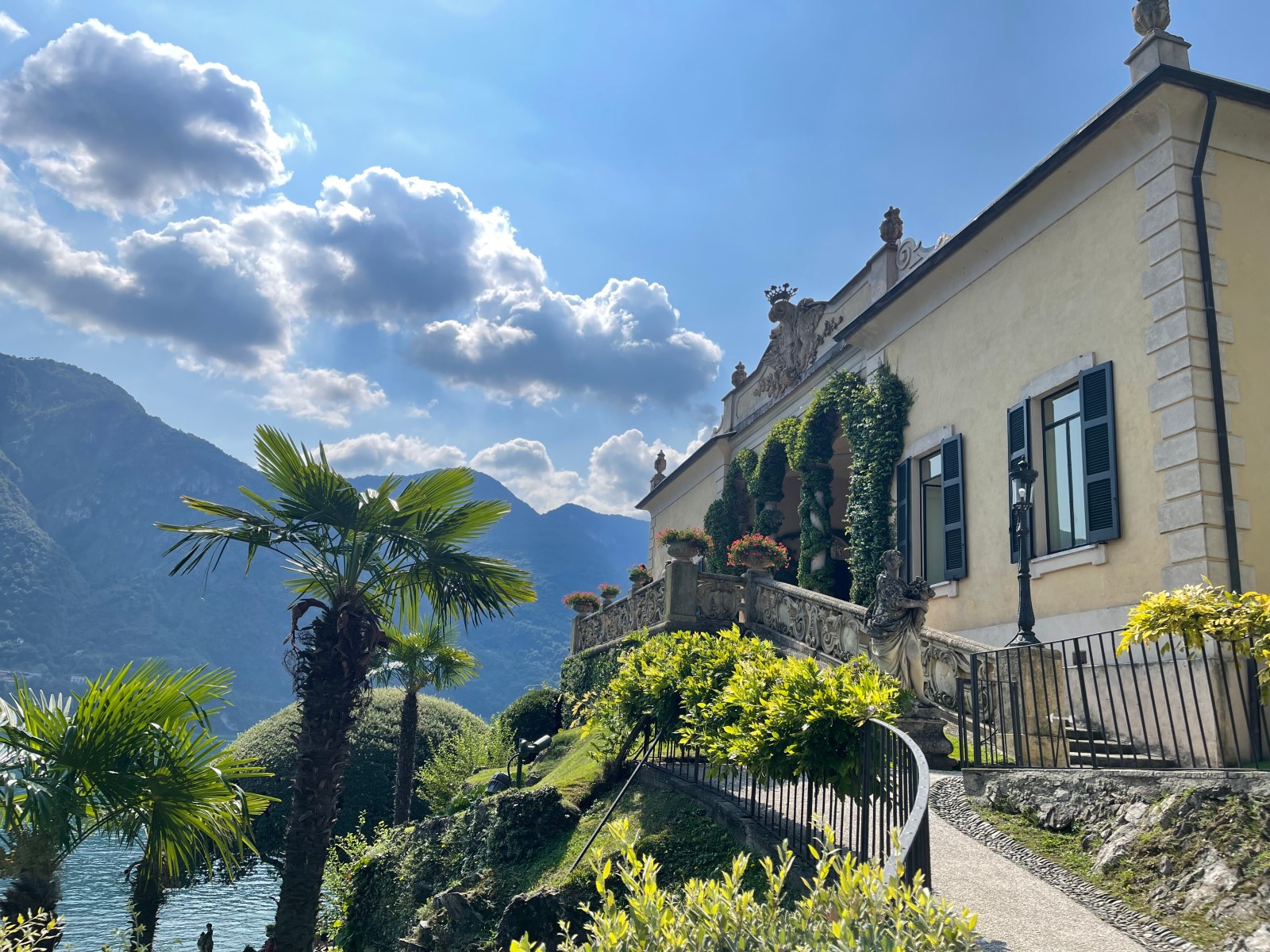
It’s a big shout when people say somewhere is the most beautiful place in the world . . . but . . . Lake Como takes it. Picture perfect Italian villages punctuating luscious forests as they meet the lake’s crystal clear waters, and all against the stunning dramatic backdrop of the Alps. It’s hard not to just stop and gorp at it over, and over again
Naturally in such a beautiful place, it comes with a huge demand from others wanting to visit and, especially in summer, the costs go through the roof. The cost is hard to avoid, but it’s actually relatively easy to avoid the crowds with a few simple tips that will allow you to enjoy what makes this place such a world famous destination

Sri Lanka is often described by travellers as “India-light”. It is far more compact, with many of the highlights possible to cover in a week; it has a similar culture in many ways; similar type of experiences on offer, such as tropical beaches, old forts, tea plantations etc; and it is generally a bit less hectic than the madness of a busy India. But, if looking at the flip side, it also doesn’t really offer anything that India doesn’t. So, if you have experience of India, you may find Sri Lanka chilled, pretty, nice to get around, but without necessarily the wow factor. The exception to this though is the Tea Country and the spectacular train ride through it
I’ve listed below the classic, compact 1 week itinerary for some of the highlights and a few high level tips to help you get the most out of the trip:
- Time of year – the experience of Sri Lanka varies dramatically by season. Basically, December to March / April is the best time for this itinerary as it is dry (and nicely cooler) season in the south coast and Hill Country. April to September is best for the north of the country and the Ancient Sites, again because it is drier
- Prioritise time in the Tea Country – the beaches in the south are lovely, Galle is nice for an afternoon, and its worth dedicating half a day to try and see a Blue Whale in Mirissa, but the highlight is the Tea Country for not just the tea estates, but also the hiking and pretty “Old English” feel towns
- Book your trains in advance – you DO NOT want to be standing. I’ve read in a few guide books that it doesn’t really matter if you stand – I think that’s ok for a hour or so, but for longer it really isn’t fun. It’s Sri Lanka – 2nd and 3rd class unreserved will have people crammed in to the point that you can’t sit on the floor and need to stand. Tickets become available 30 days in advance and are super cheap (US$7 for first class just about everywhere), so jump on the train website (really not as bad as people whinge about) or, if left it late, buy at the stations (only the large stations such as Colombo, Kandy and Nanuoya sell reserved seating tickets)
- You’ll want a driver for parts of the trip – some parts of the journey you cannot take a train, such as from Galle up to the Tea Country, and some parts you’ll want a driver to take you around the immediate sites, such as the tea factories and estates. Considering you only have a week, and potentially can share the cost among multiple people, it’s just easier to get a driver for the day. They’re typically US$50 for the day and it also has the benefit of being able to speak in detail with a local as they proudly show you their country. I rented Siri (+94 77 779 8962) for my drive from Mirissa to Ella, who was very knowledgeable; and Yoga (+94 75 165 0205) for around Nuwara Eliya. I’d recommend both
- I wish I’d . . . visited the Uda Walaw National Park. Would have been great to see more of the wildlife, and it fits perfectly into the route
- For more details on each of the experiences, see the detailed travel entries for:
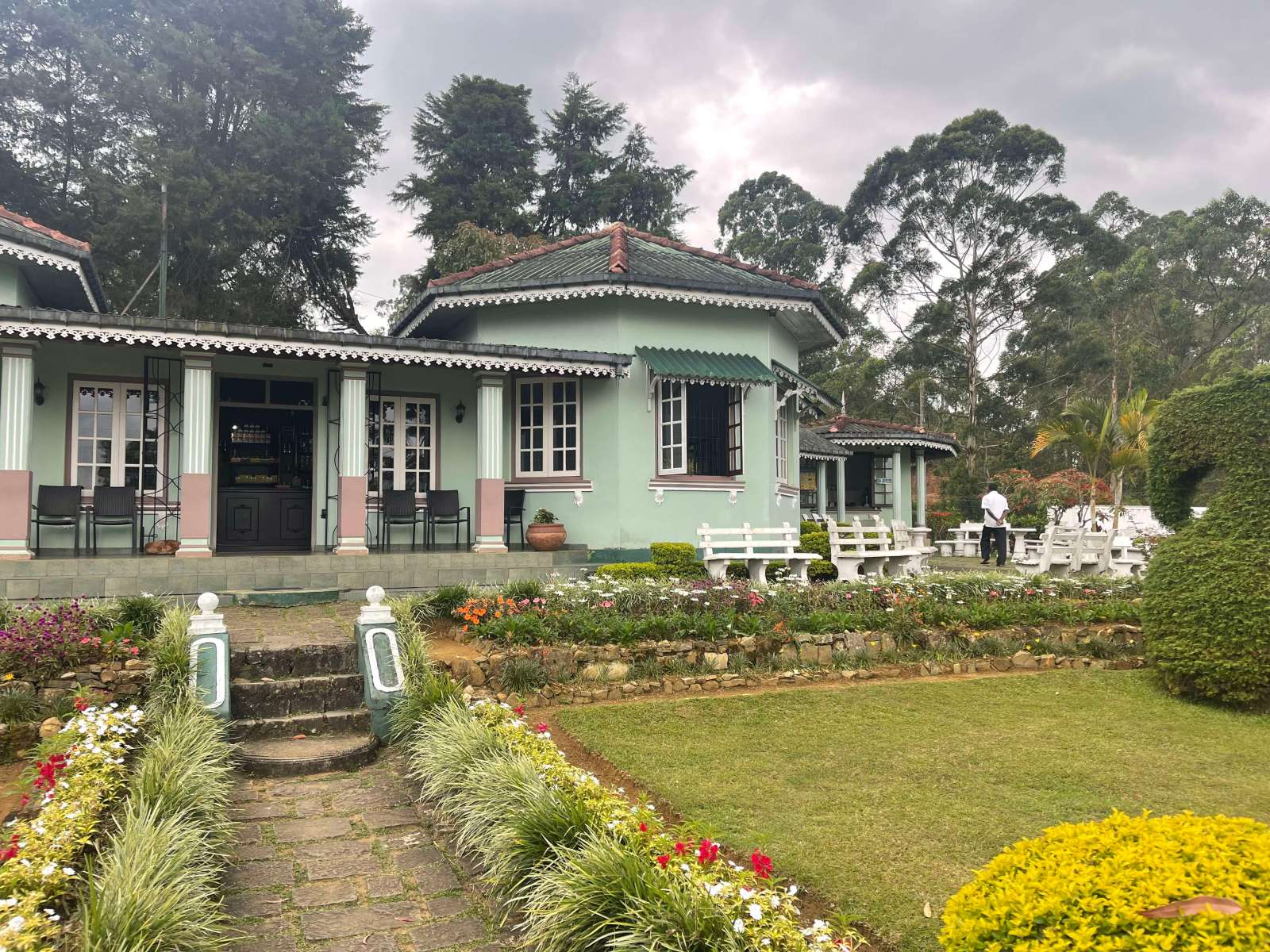
Nestled up in the middle of Sri Lanka’s Tea Country, Nuwara Eliya was one of the old colonial centres for the tea industry and, with the combo of old quaint buildings, race course, golf courses and, well bloody drizzly bleak weather, is affectionally known as “Little England”. As an Englishman I can confirm I felt right at home!
The wandering around the town is nice, as you get to places like the old post office, police station and hotels straight out of a Charles Dickens novel, but it is the surrounding Tea Estates that are the highlight
Top Tips:
1. The drive from Nuwara Eliya to Talawakelle / St Claire Tea Centre is the prettiest for views – its hard to go wrong with the surrounding countryside as it’s all gorgeous, but this is the pick of the bunch. Also, the drive from St Talawakelle to Tawalantenne is dramatic, but super windy and a bit nauseating. For a driver, I went with Yoga (+94 75 165 0205) who was great and charged around US$50 a day
2. Stay in one of the colonial hotels – it will give you the full “Little England” / Old Colonial feel. The Grand Hotel is best for this in the centre; Ferncliff Bungalow for something in the centre that is far quieter but still quintessentially English; and the Amaya Langdale / Oliphant Villa for luxury 20mins or so from the centre
3. Visit one of the Tea Factories – the Damro Labookellie Tea Factory is good for learning about the tea. The Heritance Tea Factory for more style
4. Have High Tea in the Heritance Tea Factory – beautifully restored old Tea Factory that is now a hotel providing luxurious afternoon tea from 3pm onwards
5. The parks are ok for an hour or so – Victoria Park is nice enough to walk through for 30mins, and so is the nearby Galway Land National Park, but have low expectations (highlights are the colonial buildings and tea estates)
6. Wrap up – it gets cold! The don’t call it Little England for nothing – expect drizzle and cold evenings in the winter!
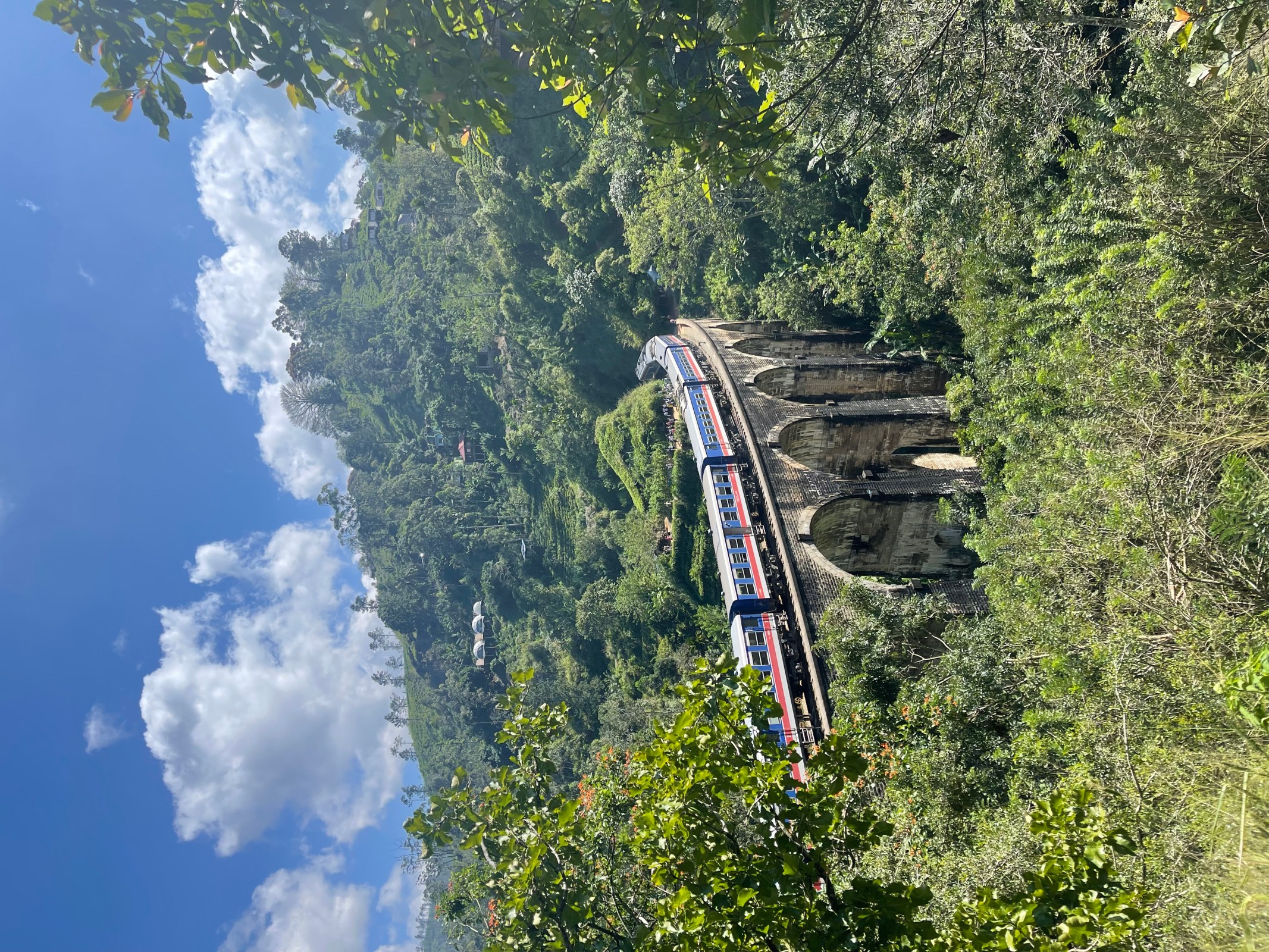
This is the highlight of Sri Lanka. Sitting with the window open as you watch the old train slowly snake its way through hours and hours of beautiful tea plantations that sit within the most dramatic part of Sri Lanka’s Hill Country. You’ll spend the first couple of hours gawping and what feels like endlessly taking photos, and then, after a while, just relaxing and soaking up the peaceful nature of the place, with its quiet towns and tea plantation workers slowly getting on with their day
A few tips to help you get the most out of the trip:
1. What is the route? There is only one train line that goes from Kandy to Badulla, via roughly 20 small/medium stations, but the main ones being Hatton (for Adam’s Peak), Nanuoya (for Nuwara Eliya aka “Little England), Haputale and Ella. The whole route end to end takes 7.5 hours, with just about all of it beautiful except for the section within 1 hour of Kandy, so it doesn’t really matter which section you do – I went from Ella to Nuwara Eliya and then Nuwara Eliya to Kandy and both routes were fab. For a really good breakdown of what to expect, try seat61’s Sri Lanka section (link – https://www.seat61.com/SriLanka.htm#colombo-to-kandy-hatton-nanuoya-badulla-by-train)
2. Make sure you stay in one of the hill towns along the route – its one thing taking the train through the plantations, its another being able to visit and learn about how they make the tea, which you can do in the various “factories” next to the towns. Plus, the surrounding country side of the hillstowns is often beautiful (such as Ella – see a detailed review here – The Hill Country Village of Ella) or just really interesting (such as the “Little England” experience of Nuwara Eliya – see the detailed review here – Staying in Nuwara Eliya’s “Little England”)
3. Book ahead a reserved seat – you DO NOT want to be standing. I’ve read in a few guide books that it doesn’t really matter if you stand – I think that’s ok for a hour or so, but for longer it really isn’t fun. It’s Sri Lanka – 2nd and 3rd class unreserved will have people crammed in to the point that you can’t sit on the floor and need to stand, and you’ll generally have less personal space than you’ll be used to, with locals having significantly better shoving skills than you to get any available seats. Tickets become available 30 days in advance and are super cheap (US$7 for first class), so jump on the train website (really not as bad as people whinge about) or buy at the stations (only the large stations such as Colombo, Kandy and Nanuoya sell reserved seating tickets. You’ll need your passport)
4. Open the window / stand next to an open door for a bit – it just adds so much more to the journey. If next to a window and can open it great. If not, the sections between the trains tend to have the door open so you can look from there. The locals tend to be super accommodating, so if one is already stood at the door, they’ll tend to either welcoming you standing their with them, or move out the way for your 10mins or so
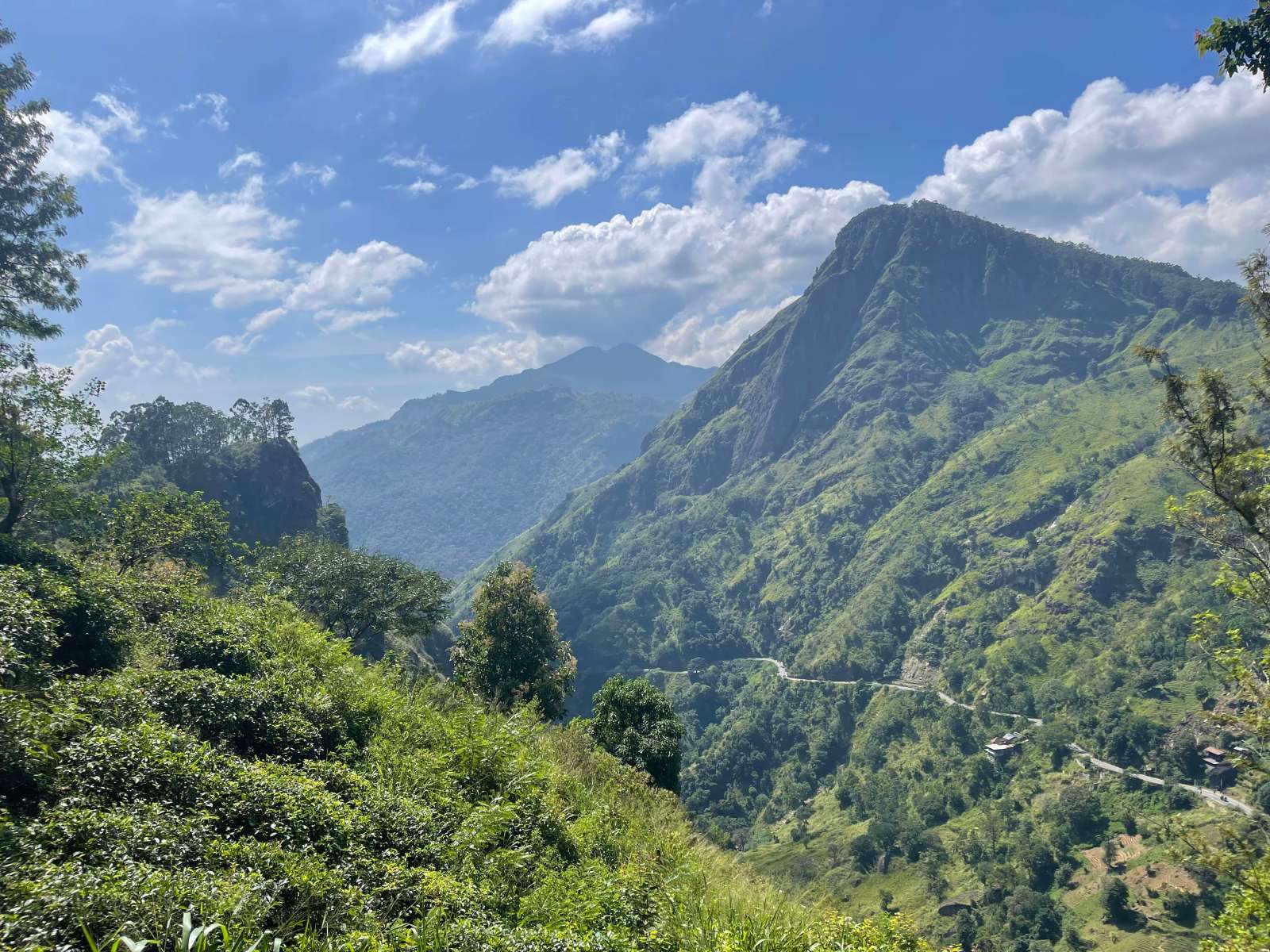
Ella is the prettiest of the towns that are scattered throughout Sri Lanka’s Hill Country, and makes the most sense to start / finish at as part of the wonderful train journey through the tea plantations that most people are here to experience. Definitely worth a day on its own as the mini hikes, tea factories and waterfalls make for a nice day to explore the immediate surroundings, and the town itself is full of restaurants and chilled out guesthouses (typically with great views) to relax after the train journey
Top Tips:
1. Walk to see the Nine Arches Bridge – it’s only a 15min walk from the main road and is just so brilliantly picturesque. See if you can time it so that you are at one of the viewing points in the trees when it passes by and be sure to ask your hotel the time of the train will be as it changes each day
2. Walk up to Little Adam’s Peak – best views across Ella, including through Ella Gap, and only an easy 1.5 / 2 hours round trip. Be sure to start your walk at the main road (at the Ella Flower Garden Resort) rather than drive up to the Ravana Pool or the Flying Ravana Mega Zipline, which is what most people did. The walk from the main road is the prettiest bit as it winds its way through the tea estate and is pretty flat, compared to the steep bit from the zipline area
3. Where to stay – there are HUNDREDS of homestays in and around Ella, so you’ll have a huge variety to choose from. I stayed at the Blooming Rose which has relatively basic rooms, but made up for it with its amazing view through Ella Gap and wonderfully welcoming host family, would very much recommend
4. Restaurants and vibe – Ella has a very backpacker / traveller vibe, so there are plenty of restaurants catering for all that are all within a 2min walk of eachother. Cafe Chill was great as it had both Sri Lankan and Western food to a high standard
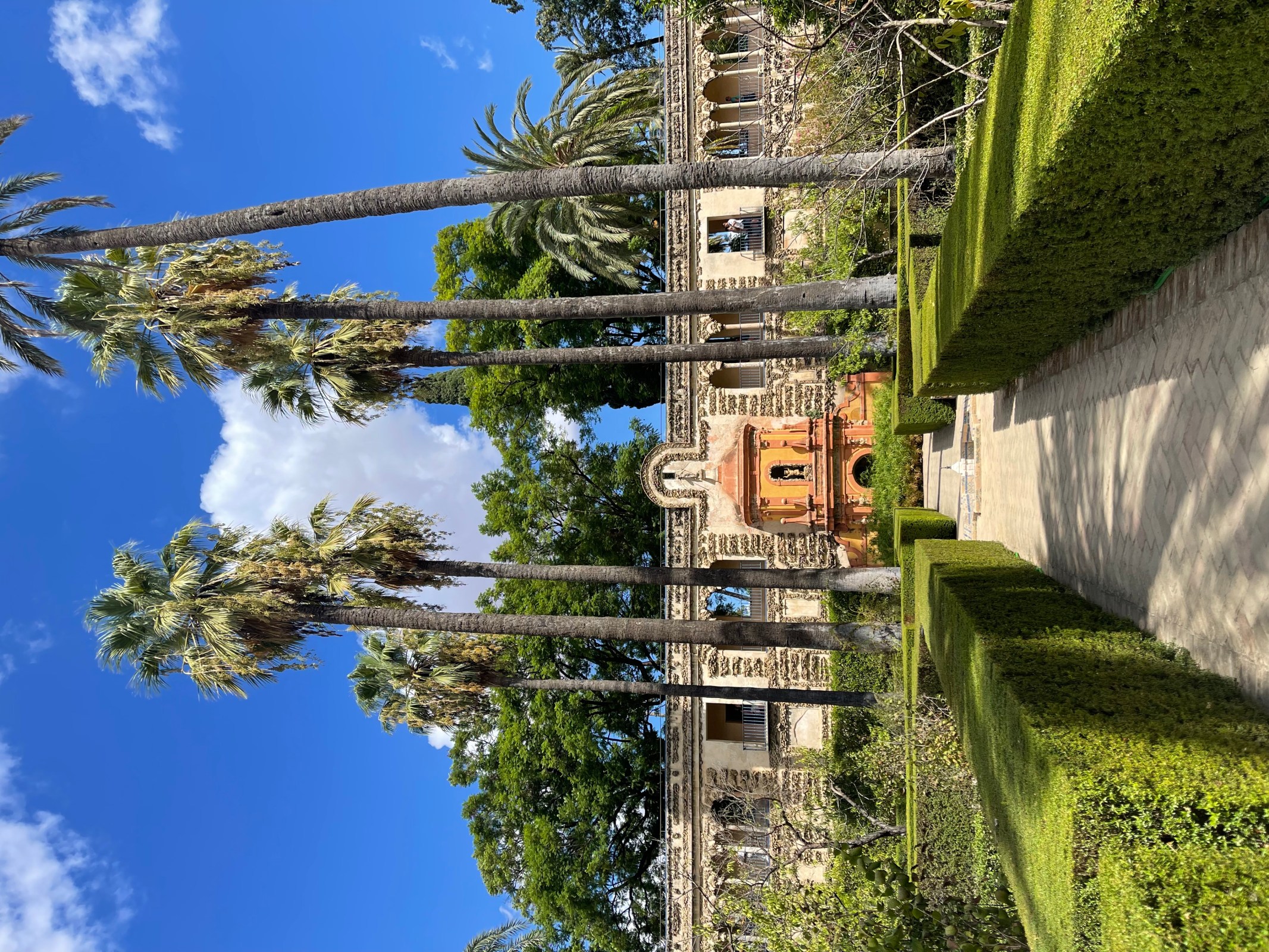
Andalucia is the jewel in the crown of Spain. There are various stella attractions that help this region claim that title – the Alhambra, Seville, Cordoba, the striking pueblos blancos (white towns), the flamenco dancing, the Sherry Triangle. There are also natural spots that are worth the trip alone, such as the beaches of Tarifa, the mountains of Parque Natural Sierra de Grazalema and the coastline of Parque Natural de Cabo de Gata-Nijar. But it is the unique historical blend of Christian Spain and Moorish Al-Andalus that gives Andalucia the magic touch and makes it the must visit region of Spain
The itinerary below will give you the highlights and try to minimise the driving by having Cordoba and Parque Natural de Cabo de Gata-Nijar as optional
I’ve listed tips below, but high level – the standout attractions are the drive through the achingly beautiful white towns of Parque Natural Sierra de Grazalema, Seville’s Old Town with its Cathedral and Palace, and staying overnight in the sensational Vejer de la Fontera
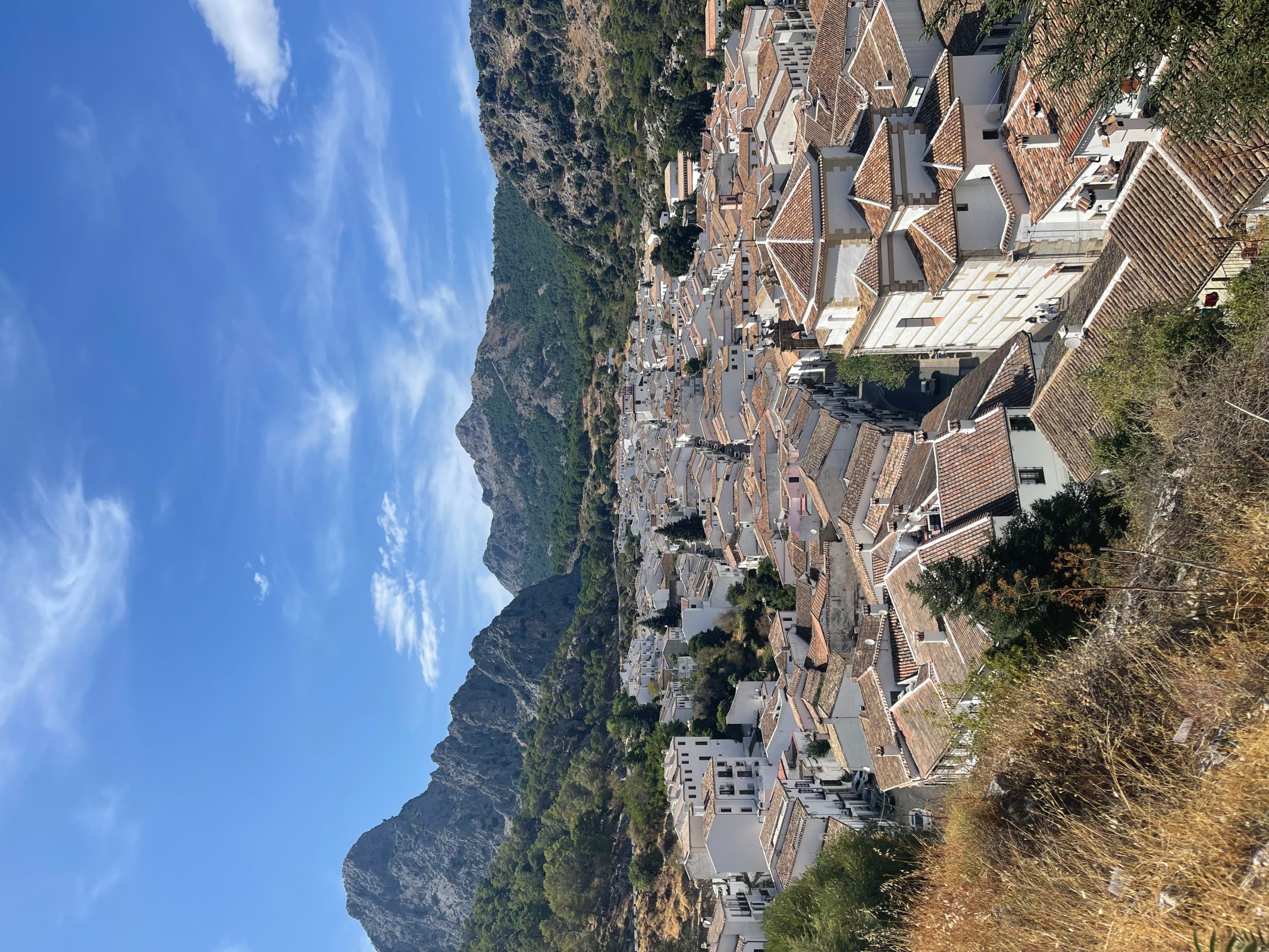
Picture-perfect, bright white Andalucian towns dramatically wedged in to the rugged peaks and sharp valleys of the Parque Natural Sierra Grazalema make this one of the most achingly beautiful places in Europe, if not the world. Being able to drive through it, as you stop repeatedly to gorp at the latest sensational vista, also makes this one of the best driving routes in the world, and, in my opinion, Spain’s premier tourist experience
Top tips:
- You’ll want to have a car. There may be some organised tours, but so much of the experience is about stopping for the gorping moments!
- The route – follow the Lonely Planet’s route from Arcos de la Fontera to Ronda (shown in photos). Whole route is 147km / 90 miles and takes around 3.5 hours time driving. As you can see from the route, there are a couple of places where you can do shortcuts to reduce the overall distance if rushed
- 1 or 2 days? We did this in one day (starting from Vejer de la Fontera so adding on an extra hour) and it was a long day. Would have been more pleasant to stay overnight in one of the small villages in the park
- Hiking – there were some sensational hiking routes, but be aware that many of the best ones are closed June – September due to fire danger, and that you need a hiking permit outside of these dates, which is a annoying
- Best towns to stop at – they’re all achingly beautiful and you’ll naturally drive through them anyway, so there is no need to miss any. That being said, Zahara de la Sierra and Grazalema were the most photogenic; and Ronda (for its bridge and gorge) and Seteril de las Bodegas (for its cave houses) were the most unusual. Ronda also has the benefit of the bull ring, which is worth a visit, and is the most developed town for accommodation options. The pass at Puerto de las Palomas is also worth stopping at for its huge vistas, and also for the eagle watching you can do from there
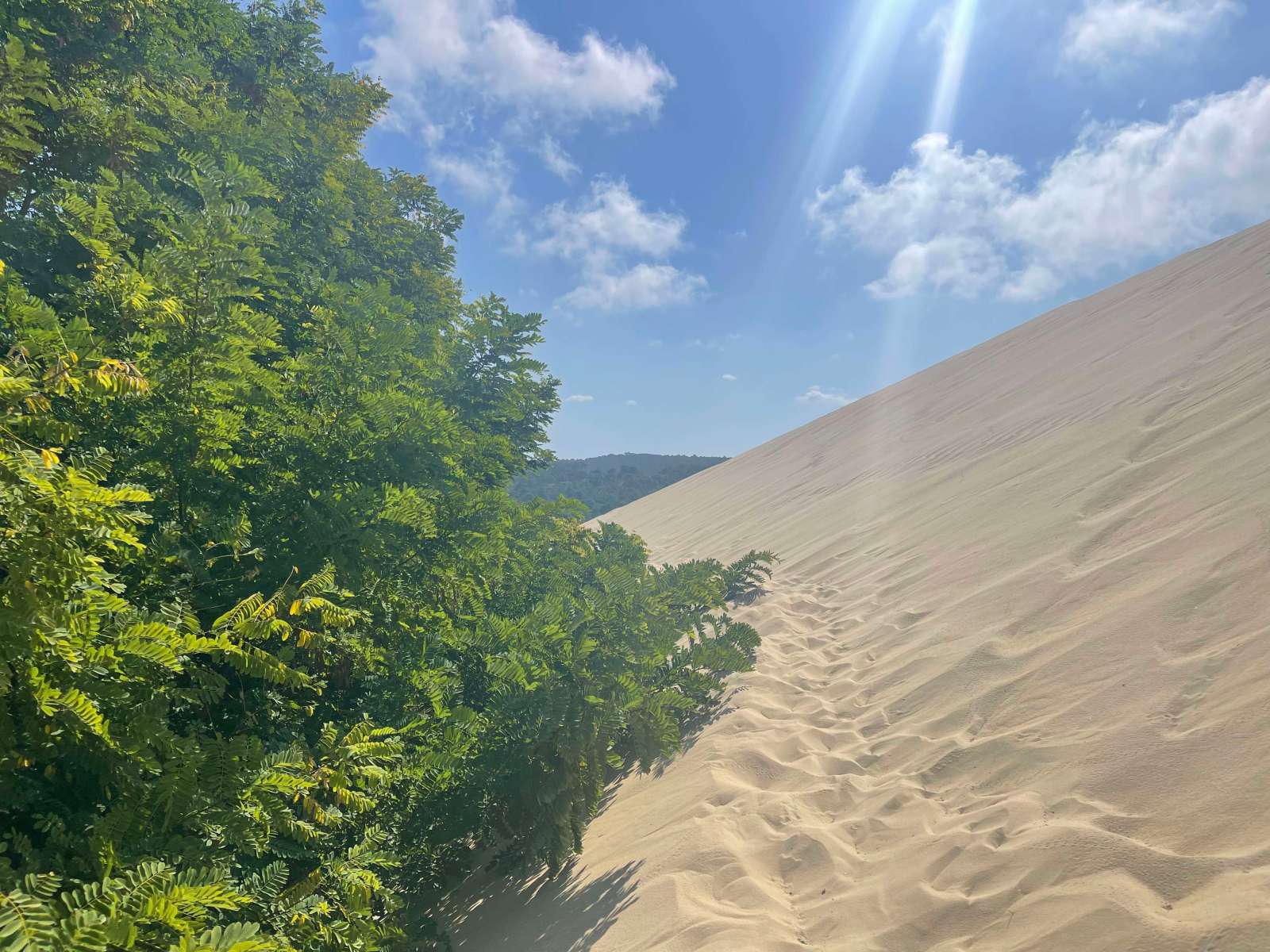
Dune du Pilat is Europe’s tallest sand dune and, on the face of it, sounds a bit dull . . . I mean, it’s just a sand dune right? Seen heaps of them . . . but . . . it’s actually a better experience than you’d initially think. For one, the views from the top at 110m / 360ft are pretty impressive as you look across the various sand bars offshore and the giant spit of the Cap Ferret bending around in the distance. Secondly, the contrast between the turquoise island paradise to the west, the evergreen forest to the east and the bright white / yellows of the sand dune are one of those sites it’s fun to gorp at for a while. And finally, the whole walking along a giant sand dune largely on your own away from fellow tourists (see top tip below) is just cool. Very much makes sense to be down as one of the Lonely Planet’s top highlights of France
Top tip – the vast majority of fellow tourists get to the top of the dune from the stairs that lead up from the main northern end car park, walk around a bit in that area and then head back down the stairs again to the car park. I can see how this would be a tad underwhelming. Instead, start to walk southwards along the top ridge of the dune – after a short time you’ll have it largely to yourself, have better views of the surrounding forest and find that walking along the ridge is far easier than the sand you’ll have been waling on before. We walked along maybe 2/3rds of the way and then ran down the dune (which was fun) and the walked back along to the northern point of the dune via the shoreline, where we were able to walk around the dune on paths back to the carpark (you could of course just avoid this shoreline-route and walk back along the ridge if don’t fancy the longer route). Whole walk from car park back to car park, including stopping a couple of times, took us around 2.5 hours
Extra tip – go barefoot. Far easier on the sand
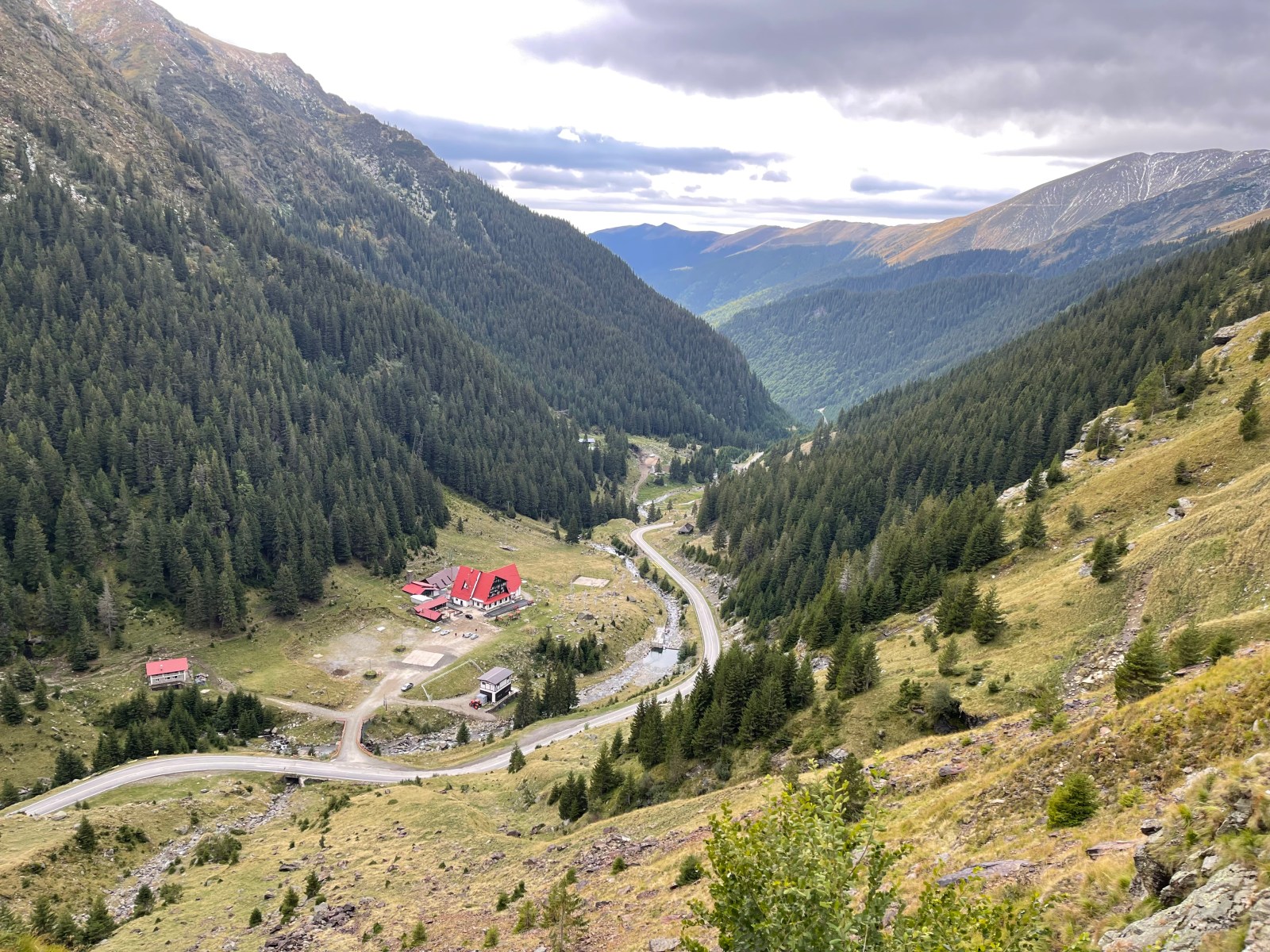
Romania, and in particular Transylvania, conjures up images and feelings of some far off place . . . in the mountains . . . in the forests . . . with castles . . . kind of like Lord of the Rings, but with a spooky vibe . . . and indeed it is all of this. And while there are not as much of a concentration of stellar attractions as you would get in Western Europe, that is kind of Romania’s charm and it makes for a great roadtrip for a week or so, with the itinerary below










